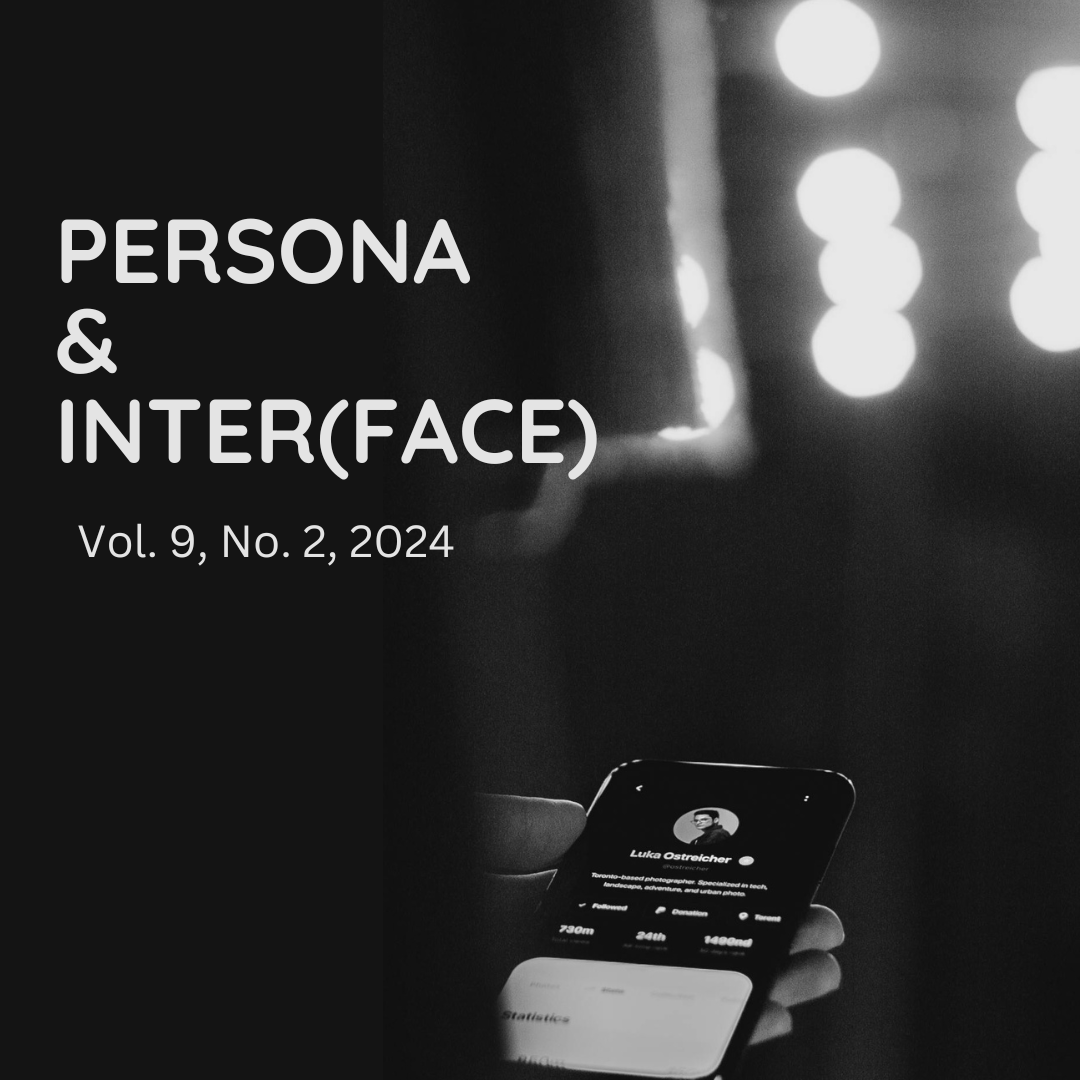ANIMAL INTERFACES AND (NON)HUMAN PERSONAS
DOI:
https://doi.org/10.21153/psj2024vol10no2art1919Keywords:
Animal Encounters, Cydog, Companion Species, Posthuman, Nonhumanism, Dog PersonasAbstract
This article explores the phenomenon of animal interfaces from a critical digital culture and media perspective. It focuses specifically on the shared boundary between the animal and technology, considering how such interfaces shape animal subjectivity and persona. By tracking various case studies of dog-technology interfaces – including, space dogs, dog photography and bionic dogs – it explores the possibility of a possible ‘cydog’ persona. I argue that dogs interfacing technology represent a possible animal persona that uniquely captures the intricacies of animal being. The cydog is an additional concept to help think through nonhuman persona that are irreducible and subjective, yet remained enframed by human actions. Guided by theorists Donna Haraway, Joanna Zylinska and Akira Lippit, I argue that interfaces play a key role in cydog encounters, creating increasingly complicated interactions that simultaneously mask anthropocentric pursuit and unmask nonhuman personas.
Downloads
References
Brittz, K 2020, ‘Dog Stories in the Digital Age: Dogstagrams as Digital Tales of Becoming with Companion Species’, Junctions Graduate Journal of the Humanities, vol. 5, no. 1, pp. 41-61. DOI: 10.33391/jgjh.78
Calarco, M 2008, Zoographies: The Question of the Animal from Heidegger to Derrida, Columbia University Press, New York.
Cassidy, R 2003, ‘“I want to know about the dogs”’, Theory, Culture & Society, vol. 23, no. 7-8, pp. 324-328.
CollarCam 2024, CollarCam, retrieved 28 March 2024, <https://petcollarcam.com/>.
Clynes, ME & Kline, NS 1960, ‘Cyborgs and space’, Astronautics, September, pp. 29-33.
Deleuze, G & Guattari, F 1987, A Thousand Plateaus Capitalism and Schizophrenia, translated by B Massumi, Continuum, New York.
Derrida, J 2002, ‘The animal that therefore I am (more to follow)’, Critical Inquiry, vol. 28, no. 2, pp. 369-418.
dog.buddyz 2019. Instagram post 26 June 2019, retrieved 20 September 2019, <https://www.instagram.com/p/BzLhUueA8Qv/>.
Drucker, J 2013, ‘Reading Interface’, PMLA/Publications of the Modern Language Association of America, vol. 1, pp. 213-220. DOI:10.1632/pmla.2013.128.1.213
Dubbs, C 2003, Space Dogs: Pioneers of Space Travel, iUniverse, Inc, Lincoln.
Encyclopædia Britannica 2024, Laika, retrieved 3 April 2024, <https://www.britannica.com/topic/Laika/images-videos#/media/1/874691/107443>.
FitBark 2019, FitBark, retrieved 1 September 2019, <https://www.fitbark.com>.
−2019, FitBark, retrieved 3 April 2024, <https://www.fitbark.com/en-GB/app>.
GoPro 2024, Fetch Dog Harness, retrieved 28 March 2028, <https://gopro.com/en/nl/shop/mounts-accessories/fetch-dog-harness/ADOGM-001.html>.
Haraway, DJ 1991, ‘A cyborg manifesto: science, technology, and socialist-feminism in the late twentieth century’, in Simians, Cyborgs, and Women: The Reinvention of Nature, Routledge, New York, pp. 149-181.
−2003, The Companion Species Manifesto: Dogs, People, and Significant Otherness, Prickly Paradigm Press, Chicago.
−2008, When Species Meet, University of Minnesota Press, Minneapolis.
Hauskeller, M 2017, ‘How to become a post-dog: animals in transhumanism’, Between the Species, vol. 20, no. 1, pp. 25-37.
Heidegger, M [1954] 1977, ‘The question concerning technology’, in DF Krell (ed), Basic writings, Harper & Row, New York.
Hirskyj-Douglas, I 2016, Here’s what dogs see when they watch television, The Conversation, retrieved 12 September 2019, <http://theconversation.com/heres-what-dogs-see-when-they-watch-television-65000>.
Hirskyj-Douglas, I & Read, JC 2018, ‘DoggyVision: Examining how Dogs (Canis familiaris) Interact with Media using a Dog-Driven Proximity Tracker Device’, Animal Behaviour and Cognition, vol. 5, no. 4, pp. 388-405. DOI: 10.26451/abc.05.04.06.2018
Lippit, AM 2000, Electric Animal: Toward a Rhetoric of Wildlife, University of Minnesota Press, Minneapolis.
Kemp, M 2007, ‘A dog’s life: Laika, the doomed stray, has achieved a kind of immortality’, Nature, vol. 449, no. 7162, pp. 451.
Kinsley, M 2006, Like I Care, Slate, retrieved 13 December 2023, <https://slate.com/news-and-politics/2006/11/on-the-internet-everybody-knows-you-re-a-dog.html>.
Mitchell, WJT 2015, ‘Screening nature (and the nature of the screen)’, New Review of Film and Television Studies, vol. 13, no. 3, pp. 231-246, DOI: 10.1080/17400309.2015.1058141
MRwiteout 2022. I Strapped A GoPro to My Dog, YouTube video, retrieved 3 April 2024, < https://www.youtube.com/watch?v=BNncnr0M09A>.
Ohrem, D 2018, ‘Some Thoughts on (Animal) Encounter’, in D Ohrem & M Calarco (eds), Exploring Animal Encounters: Philosophical, Cultural, and Historical Perspectives, Palgrave Macmillan, Switzerland, pp. 3-42.
Rhoads, B 2015, 11 Pups Who Mastered the Art of the Accidental Selfie, Bark Post, retrieved 28 March 2024, <https://post.bark.co/fun/barkfeed-accidental-selfie/>.
Schäfer, MT & van Es, K 2017, The Datafied Society, Amsterdam University Press, Amsterdam.
Schreder, S 2018, On the internet, no one knows you’re doggo, dist://ed, retrieved 28 March 2024, <https://blog.mozilla.org/en/products/firefox/irl-on-the-internet-no-one-knows-youre-doggo/>.
Senft, TM & Baym, NK 2015, ‘What does the selfie say? Investigating a global phenomenon’, International Journal of Communication, vol. 9, pp. 1588-1606.
Sparrow, R 2002, ‘The march of the robot dogs’, Centre for Applied Philosophy and Public Ethics, vol. 7, pp. 1-30.
Stampler, L 2013, This collar lets your pet take pics and post them to Instagram, Time, retrieved 28 March 2024, <https://newsfeed.time.com/2013/12/02/this-collar-camera-lets-your-pet-take-pics-and-post-them-to-instagram/>.
Steiner, P 1993, ‘On the Internet, Nobody Knows You’re a Dog’, The New Yorker cartoon, 5 July.
Turkina, O 2014, Soviet Space Dogs, FEUL publishing, London.
Turkle, S 2008, ‘Always-On/Always-On-You: The Tethered Self’, in JE Katz (ed.), Handbook of Mobile Communication Studies, MIT Press, Cambridge, pp. 121-138.
Valdez, A 2018, Meme’s best friend: the rise of ‘doggo’, Wired, retrieved 1 November 2018, <https://www.wired.com/story/rise-of-doggo/>.
Weil, K 2012, Thinking Animals: Why Animal Studies Now?, Columbia University Press, New York.
Weinstein, J 2004, ‘The Companion Species Manifesto: Dogs, People, and Significant Otherness Donna Haraway’, Anthrozoös, vol. 12, no. 2, pp. 186-192.
Whistle 2024, Smart devices, retrieved 28 March 2024, <https://www.whistle.com/>.
Winder, D 2019. AI startup develops facial recognition software for dogs, Forbes, retrieved 2 September 2019, < https://www.forbes.com/sites/daveywinder/2019/07/14/alibaba-backed-facial-recognition-app-identifies-your-dog-by-its-nose-print/?sh=2eca9c237b0c>.
Wolfe, C 2003. Animal Rites: American Culture, the Discourse of Species, and Posthumanist Theory, Chicago University Press, Chicago.
Zylinska, J 2009, Bioethics in the Age of New Media, MIT Press, Cambridge.
−2017, Nonhuman Photography, MIT Press, Cambridge.
Downloads
Published
Issue
Section
License
Copyright (c) 2024 Karli Brittz

This work is licensed under a Creative Commons Attribution-NonCommercial 4.0 International License.







